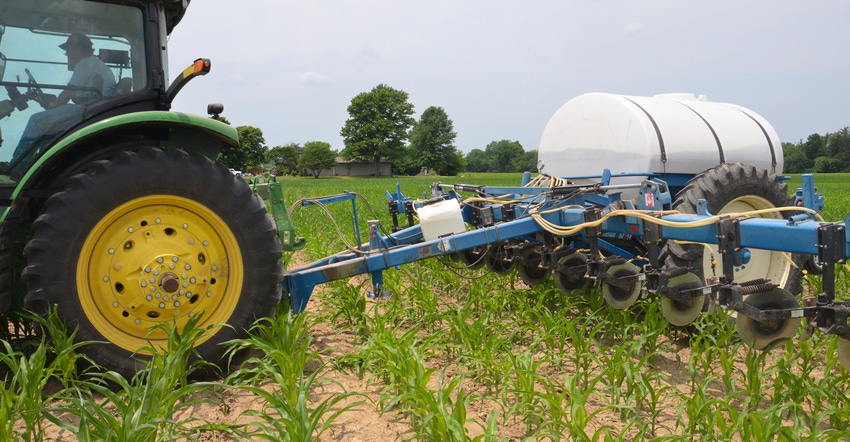
Nitrogen is always one of the highest variable costs in the corn budget. This year it may be the runaway winner, not counting cash rent. That means it’s critical to manage each unit of nitrogen as efficiently as possible.
“We suggest fertilizing with nitrogen for the highest economic return possible this year, not necessarily the highest maximum agronomic yield,” says Dan Quinn, Purdue Extension corn specialist. “Then be as efficient as you can to make sure you get the best possible use of nitrogen.”
4 tips to use
Here are four factors that should help you better utilize nitrogen:
1. Select economic optimum rate. “Aim for maximum net return, not maximum yield,” Quinn recommends. The maximum net return per acre for nitrogen is typically 20 to 30 pounds per acre less than the nitrogen rate suggested for maximum agronomic yields on your soils.
Quinn notes that Iowa State University’s nitrogen rate calculator allows you to vary N price and corn price, running various scenarios to compare N rates. The data powering the N rate calculator for various regions within Indiana was collected by Purdue Extension specialists Bob Nielsen and Jim Camberato over the past dozen years in on-farm and university ag center trials. See Nitrogen Management Guidelines for Corn in Indiana.
2. Split-apply N when corn needs it most. Corn takes up about 25 pounds of nitrogen per acre by V6 and the rest afterward, Quinn reports. “It makes sense to apply a smaller amount of nitrogen at planting, so corn has adequate N for early development, and then apply the rest later as a sidedress application,” he says.
Quinn’s research trials, which was done while working on his advanced degree at the University of Kentucky, compared split applications of nitrogen at sidedressing, following cereal rye as a cover crop. Split applications were much more efficient than an all-preplant application following a cover crop, but the same trend applied in plots with no cover crop. In fact, yields were significantly higher with no cover crop when N was split between a 2-by-2 planter application and sidedressing, versus one preplant application.
3. Watch environmental impact of application. “These are extremely difficult to predict in advance,” Quinn emphasizes. “So many factors are intertwined, including rainfall, temperature, soil type and so many more. The best advice is to get as efficient with placing and timing of nitrogen as you can instead of trying to outguess this impact.”
4. Don’t rule out late-season application. If you don’t get nitrogen applied as sidedress when you want, or if wet soils lead to nitrogen losses of preplant nitrogen, late-season applications at V11 or V12 can produce great results, Quinn says. In fact, in some seasons you can still rescue a healthy crop in the early reproductive stage.
“The problem with planning on a V11 or V12 application for a large amount of N is that weather could turn wet and you might not get it on when you want,” Quinn says. “But in the right situation, you can still apply N late to rescue a crop with good results.”
About the Author(s)
You May Also Like




